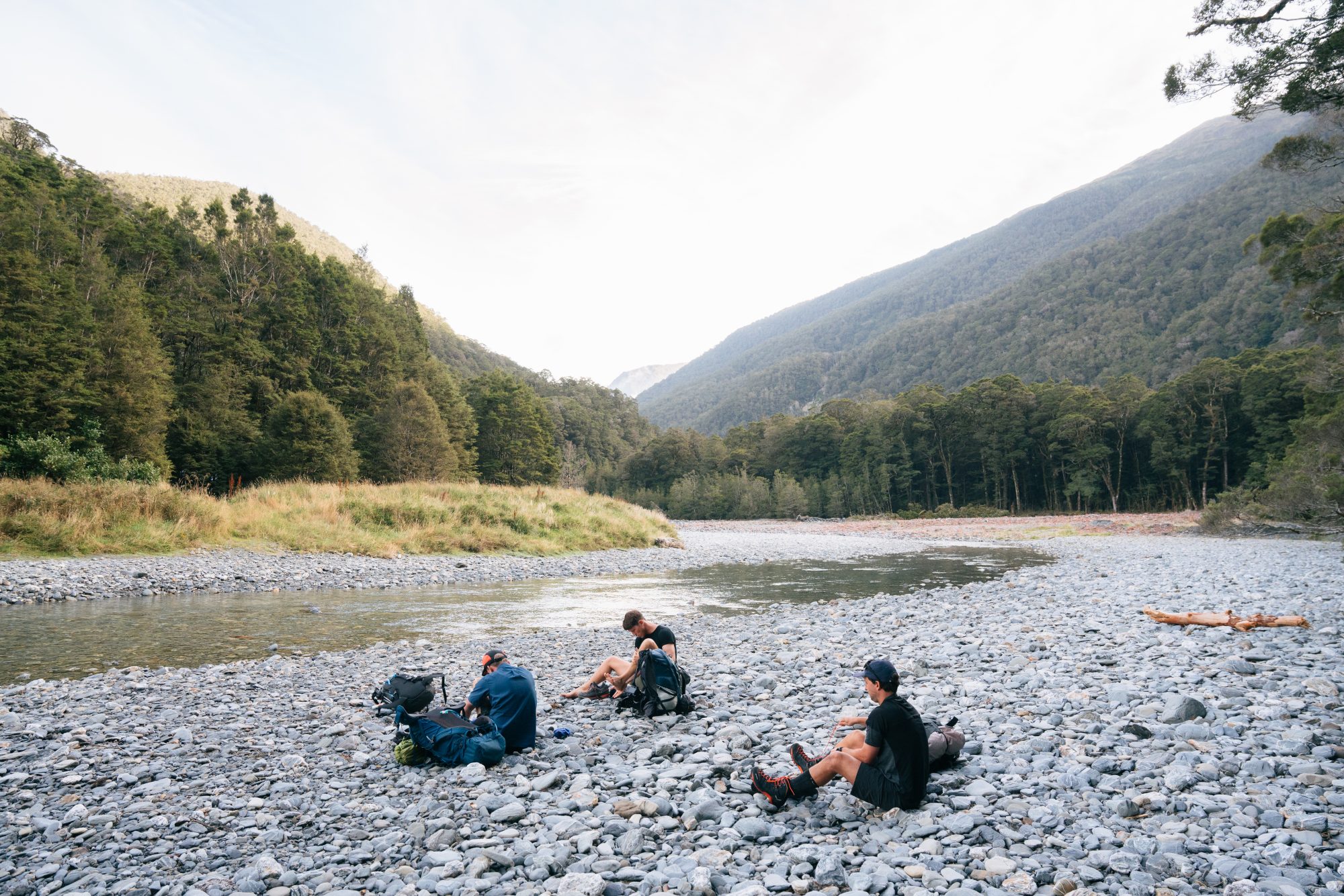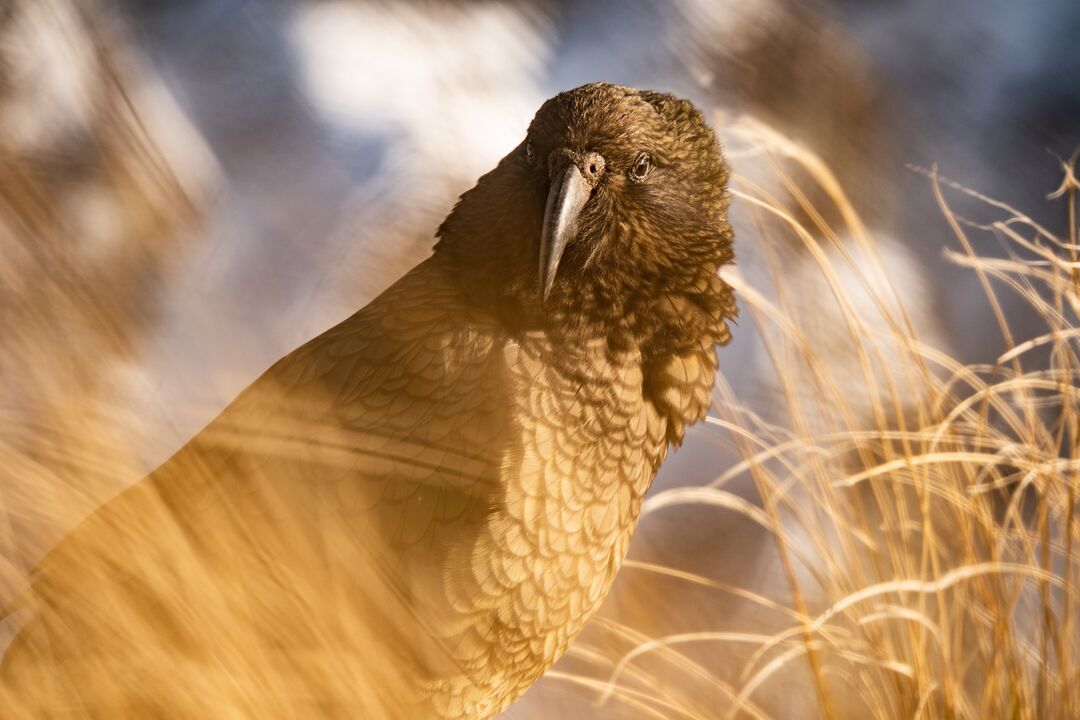But, like many of the world’s natural wonders, our spectacular surroundings are vulnerable to a number of ever-growing threats, from rapid growth and urbanisation, introduced pests, invasive plant species and reduced biodiversity, to pollution in our waterways and the effects of increasing temperatures. It can be hard to know where to start, and what impact we can have. Which is where Love Wānaka comes in, providing a platform for our community and visitors to learn, engage and give back.
It’s no secret that Wānaka’s unique landscape provides an incredible backdrop for adventure. From hiking and climbing, to skiing and biking, outdoor pursuits are part of the timeless Wānaka experience. But this place offers a deeper connection to the land that threads into the very fabric of our community, and of the lives and experiences of those who came before us.
For Kāi Tahu/iwi, Wānaka is a whenua puiaki/precious land, and a place of deep spiritual and ancestral significance. The mountains and valleys are places of atua/gods, the whakapapa/genealogies of their ancestors etched into the very landscape. The land stands as an important cultural identifier, remembering a rich history that dates back long before European settlers arrived.
The concept of “ki uta ki tai”/“from the mountains to the sea”, is a key sentiment in Wānaka. Both Lake Wānaka and Lake Hāwea feed into Te Mata-Au/the Clutha River, quite literally flowing from the mountains to the sea and highlighting an interconnectedness integral to te ao Māori/the Māori worldview. It emphasises the importance of a holistic approach to stewardship, recognising that the health of our land, our water, and our people are intrinsically linked.
As well as being fundamental to the cultural identity and well-being of our people, the spectacular landforms and biodiversity in the Lake Wānaka and Whakatipu catchments are of huge ecological importance. Wānaka’s environment is a living testament to the ancient world of Gondwanaland, the singular continent that connected all landforms some 200 million years ago. Bordering one of the greatest natural areas in the world, Wānaka has some of the best modern representations of ancient biota (animals and plants) from this supercontinent, offering a rare glimpse into the past.
Wānaka provides a doorway to the Tititea Mount Aspiring National Park. Filled with ancient glaciers, stunning waterfalls, braided rivers, and expansive native beech forests, these habitats support a rich diversity of flora and fauna, including many precious native bird and fish species found nowhere else on earth.
Despite its beauty, this is an environment that’s under threat.
The growth of our region leads to less wild spaces and puts pressure on our biodiversity and native plant life, while introduced pests and predators threaten the health of our native ecosystems by preying on and competing with native birds, reptiles, and invertebrates. With over 30 native species in this region at risk of extinction, it’s a challenge that cannot be ignored.
Increasing visitor numbers mean more people get to connect with this environment, but it also opens up these fragile ecosystems to the impacts of exploration – from increased waste and pollutants entering the environment, to trampled habitats, vegetation damage, and displaced flora and fauna.
Since humans first set foot in New Zealand, our native forests have been reduced by 70%, and our native bird species by 30%. The statistics for our region are even more sobering, with up to 90% of our indigenous plant cover now lost.
The dry woodlands that were once prolific in this area are now one of the most threatened and least protected ecosystems in New Zealand. Efforts by organisations like the Whakatipu Reforestation Trust in Queenstown, and Te Kākano in Wānaka are crucial in reversing these trends and ensuring a vibrant future for our native species.
Te Kākano Aotearoa Trust is a Wānaka non-profit organisation that eco-sources seeds from the Upper Clutha area, raises seedlings in their extensive nursery, and facilitates community-based native planting and habitat restoration. They inspire community native habitat restoration through propagation, education and hands-on participation. Find out how to join them at one of their monthly Nursery Sessions here.
Te Kākano aren’t alone in their work, though. Wānaka is home to an incredible array of organisations and individuals who care for this place by going above and beyond every day to protect the environment.
Our role is to get behind these organisations, offset the impacts of our activities and experiences, and give back to the places we love so they continue to thrive.
Protecting Wānaka’s unique environment requires a collective effort, and that’s where we come in.
Love Wānaka is here to make it easy for our visitors, residents, and local businesses to give back and play a part in protecting and regenerating this spectacular landscape. So many of the solutions already exist at the local level, but they need our help.
It’s important we prioritise more sustainable practices, support the local businesses doing the mahi, and give back to the organisations driving efforts to protect this place.
Ready to join the mission? We’ve made it easy channel your love for this place into something good – here’s how to help.







